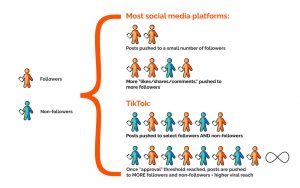Great marketers are great storytellers. We know a great book or movie, but marketers today have a few seconds to tell a story; seven to eight in fact. If you do a good job in the first seven seconds you might pull through a few more precious seconds or minutes of your prospect’s time.
Fortunately, people want to hear stories. It’s human nature. Great stories move people. Inspire them. Make them feel connected. And feeling connected to others is one of our most basic needs. Sometimes B2B marketers shy away from emotion and stick to facts, but that’s a mistake. Emotion is what separates brands, and there are many emotions that a good marketer can evoke. You have the opportunity to tell stories that engage people and make them feel something about your brand. And ideally, they act on that feeling in the end by buying your product or service.
When Business Gets in the Way
The very tactics employed to drive revenue often distract marketers from their storytelling – and from being great marketers. Think about it. They need to demonstrate ROI, produce metrics that tie their efforts to sales leads, serve up contacts and campaigns (not to mention the outcomes of those campaigns), invest time in marketing attribution…and track results from brand to demand to revenue.
Now, these are clearly all important measurements. The reason companies engage in marketing in the first place is to drive these kinds of results. But here’s the thing: you can’t drive results like this unless you’re telling your story first. The right story. The right way. To the right people. At the right time.
Five Storytelling Tips for B2B Marketers
I decided to tap into the mind of one of the great storytellers of the past century, New York Times bestselling author Kurt Vonnegut. He once shared his thoughts on crafting a good short story, and while his advice was obviously directed at budding authors, many of the lessons apply to B2B marketers as well.
- Use the time of a total stranger in such a way that he or she will not feel the time was wasted. Google calls this “Be there, Be useful.” The point is, you need to make time in your storytime well spent for your audience. You can entertain, provoke, educate, or assist, but your customer should get something out of it. Emotion is a powerful tool, use it.
- Every character should want something, even if it is only a glass of water. Engage prospects who are in an active buying cycle and looking for your products or services specifically. Predictive technologies let you place your story in front of someone when they are most interested in reading it. Help them see that you understand what they want before you start explaining how you fulfill it.
- Start as close to the end as possible. When the sales cycle is shortened, everyone wins. Know exactly where your prospect is on their buying journey – and give them something useful for that stage.
- Be a Sadist. No matter how sweet and innocent your leading characters are, make awful things happen to them in order to show the reader what they are made of. Sadist may be a bit strong, but making the wrong decision has consequences and you want to ensure your customers understand the consequences of the wrong decision, not just the benefits of the right one. Don’t be afraid of controversy. You want people talking, debating, and engaging. Bright colors are noticed, beige fades into the background. Don’t engage in beige marketing, it’s a huge waste of time and money.
- Write to please just one person. If you open a window and make love to the world, so to speak, your story will get pneumonia. Target, target, target. Know your customer intimately and tailor your marketing to them. There are a multitude of technologies available now to help focus on your specific customer and put your message in front of them, but it must be the right message.
I’d add at least one more to this list: Be different, not just better. Everyone talks about better…blah, blah, blah. Be different, stand out, be noticed. Give people something new to think about.
We’re inundated with content and messages. Only a few break through, and fewer still are remembered. The ones that break through are the ones that cause us to react, that tell a compelling story, and elicit some emotion. Brands that do this well, over and over, are the ones that make the consideration set. So, the next time sales is clamoring for higher quality leads, finance is looking for pipeline numbers and the CEO is scrutinizing your budget again, remember: stick to your story. Because in the end, being a great storyteller – a great marketer – will help you deliver the results they seek.
Business & Finance Articles on Business 2 Community(54)







